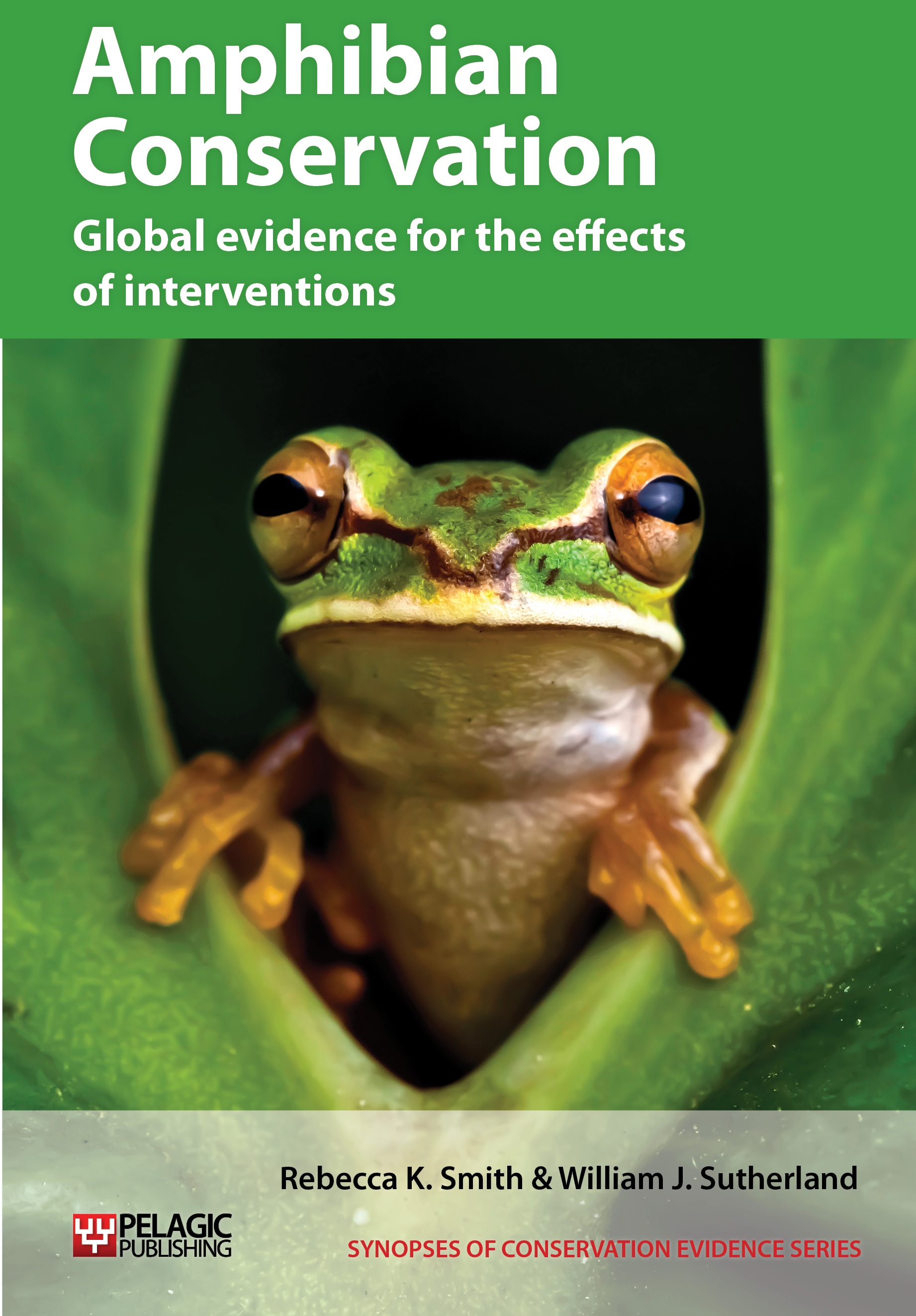Use herbicides to control mid-storey or ground vegetation
-
Overall effectiveness category Likely to be ineffective or harmful
-
Number of studies: 5
View assessment score
Hide assessment score
How is the evidence assessed?
-
Effectiveness
10% -
Certainty
50% -
Harms
50%
Study locations
Supporting evidence from individual studies
A controlled, before-and-after study in 1994–1997 in a hardwood forest in Virginia, USA (Harpole & Haa 1999) found that understory removal using herbicide did not affect the relative abundance of salamanders. Captures did not differ significantly before and after understory removal (9 vs 11/search). Abundance did not differ significantly within the untreated plot over time (1994: 10; 1995–1997: 8–10). Treatment was within a 2 ha plot. Salamanders were monitored along 15 x 2 m transects using artificial cover objects (50/plot).
Study and other actions testedA randomized, replicated, controlled study in 1997–1998 of pine sandhills in Florida, USA (Litt et al. 2001) found that understory removal using herbicide did not result in increased abundance of amphibians. In 1998, capture rates were significantly lower in understory removal plots and prescribed burning plots than fire suppressed (control) plots for southern toad Bufo terrestris (herbicide: 0.002; burn: 0; no burn: 0.008; reference: 0.003 captures/trap days). However, capture rates did not differ between understory removal, burned or fire suppressed treatments for oak toad Bufo quercicus or eastern narrowmouthed toad Gastrophryne carolinensis in 1998, or any species in 1997. In 1997 (not 1998), herpetofauna similarity indices indicated that burned plots were significantly more similar to reference (frequently burned) sites than understory removal or fire-suppressed plots (burn: 0.76; herbicide: 0.49; no burn: 0.49). Treatments were in randomly assigned 81 ha plots within four replicate blocks in spring 1997. Data were also collected from four frequently burned reference sites. Monitoring was undertaken using drift-fencing and pitfall traps in April–August 1997–1998.
Study and other actions testedA randomized, replicated, controlled in 1993–1999 of four harvested forests in Virginia, USA (Knapp et al. 2003) found that salamander abundance was similar in plots with and without herbicide treatment (7 vs 6/30 m2; see also (Homyack & Haas 2009). Four sites had 2 ha plots with herbicide application (Garlon4) to reduce woody shrubs and a control with no management. Salamanders were monitored on 9–15 transects (2 x 15 m)/plot at night in April–October. Monitoring was undertaken 1–2 years before and 1–4 years after treatment.
Study and other actions testedA replicated, site comparison study in 2001–2002 of boreal forest stands in Ontario, Canada (Thompson et al. 2008) found that herbicide treatment and planting after logging did not result in higher amphibian abundance compared to stands left to regenerate naturally. Wood frogs Rana sylvatica were significantly less abundant in 20–30-year-old stands that had been managed by planting and herbicide treatment with or without tree scarring (0.06 captures/trap night) compared to those that had been left to regenerate naturally (0.09). Capture rates in 32–50-year-old managed stands (0.07) did not differ significantly from naturally regenerated (0.12) and uncut stands (0.06). For American toads Bufo americanus, there was no significant difference in capture rates between treatments or ages of stands (managed: 0.02–0.04; natural regeneration: 0.02–0.03; uncut: 0.03). Nineteen stands that had received each treatment and five uncut stands were surveyed. Drift-fencing with pitfall traps were used for monitoring in August–September 2001–2002.
Study and other actions testedIn a continuation of a previous study (Knapp et al. 2003), a randomized, replicated, controlled study in 19942007 of six hardwood forests in Virginia, USA (Homyack & Haas 2009) found that salamander abundance was similar in plots with mid-storey herbicide treatment and without up to 13-years post-harvest (8 vs 7/transect). There were six sites with 2 ha plots randomly assigned to treatments: herbicide application (triclopyr and imazapyr) to reduce woody shrubs and a control with no management. Treatments were in 1994–1998 and salamanders were monitored at night along nine 15 x 2 m transects/site.
Study and other actions tested
Where has this evidence come from?
List of journals searched by synopsis
All the journals searched for all synopses
This Action forms part of the Action Synopsis:
Amphibian Conservation
Amphibian Conservation - Published 2014
Amphibian Synopsis





)_2023.JPG)














